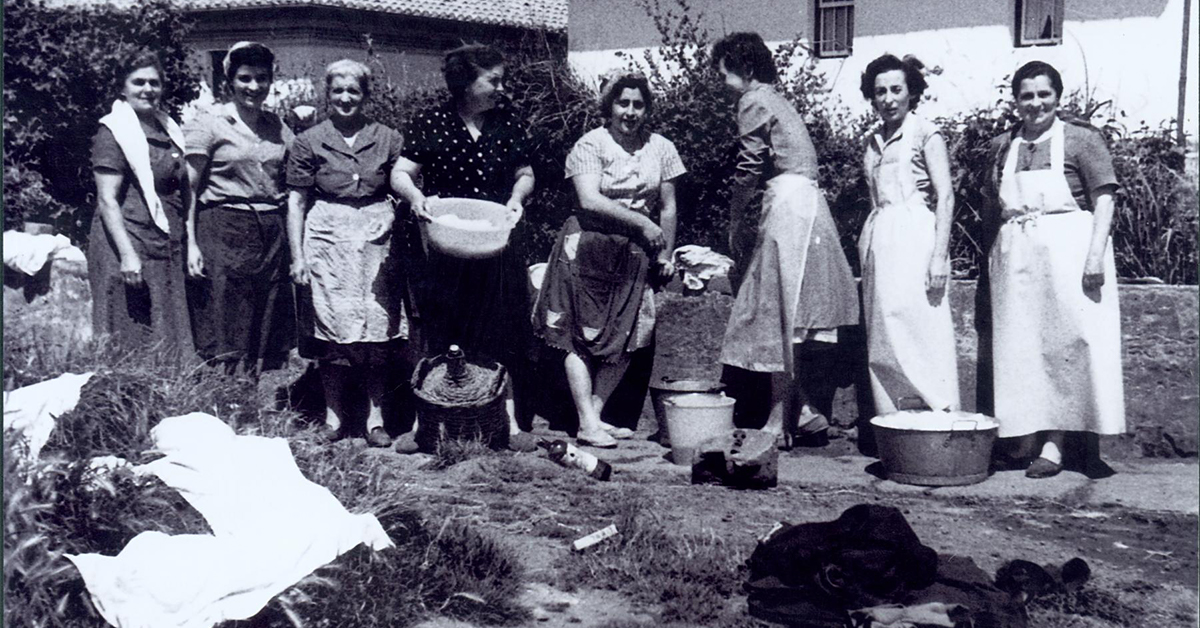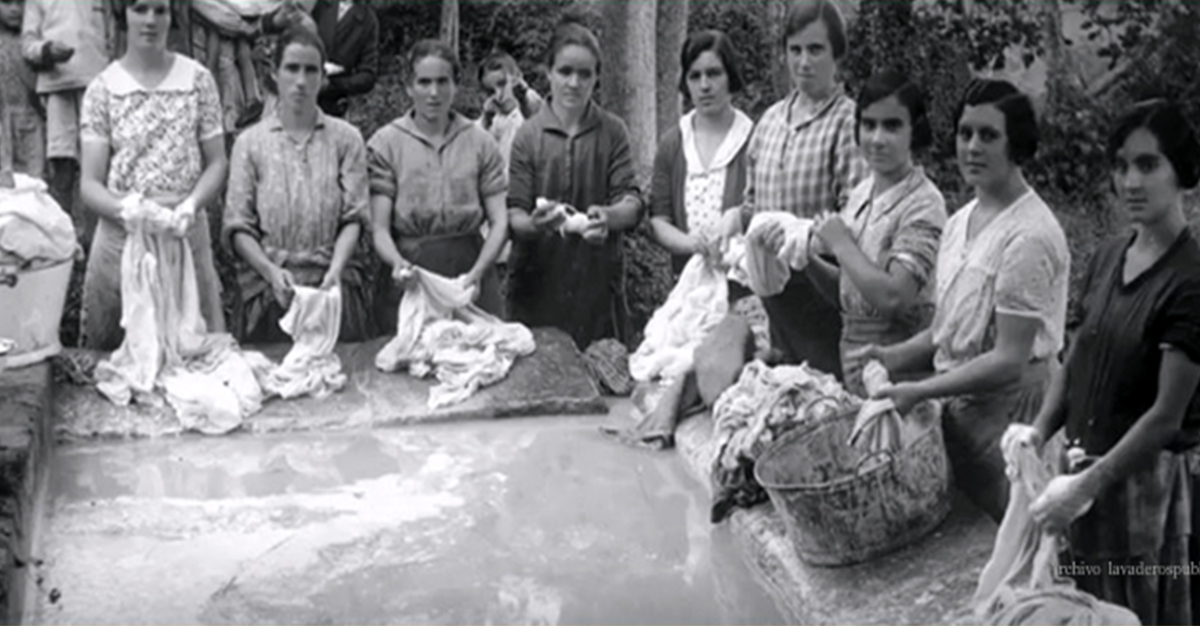Basque ethnography at a glance
The question of why would a space be built exclusively for women to wash clothes is not easy to answer, nor is it as simple as saying that the aim was to implement hygienic measures, in accordance with the new times. What is more, our villages featured almost no facilities for the common good, except for a small trough, a fountain, or a council house. Is it not truly remarkable that councilmen would decide on the construction of a washhouse so as to improve, one assumes, the working conditions of women? Because the task of doing laundry fell on women, as we all know. Indeed, before washhouses emerged, they would carry the bulky loads of dirty household linen and clothing on their heads to be washed at rivers and streams, in cold water and at usually shady places, soaping and scrubbing them on some smooth rock, bending their backs to nearly kiss the water.
Washhouses fulfilled a significant role as places where women gathered and socialized, with codes of conduct and relationship which reached beyond the physical outhouse itself. They remain asleep today, though not in oblivion, but in the silent memory of their former protagonists. Unlike taverns, where men gathered for the main purpose of socializing, these exclusive female spaces should be understood as places where women mixed together as well as worked.
Strictly speaking, a washhouse used to be a place where laundry was washed, which does not necessarily suggest that women should wash it. However, men have not historically recognized ourselves doing certain chores, laundering being one of them. We men excluded ourselves from washhouses, as it were, and they women would perhaps have felt rather uncomfortable in our presence, unwillingly forced to make the effort to socialize with us. But gender stereotypes did never allow that hypothesis to occur, and male presence in these places reduced to merely their construction, maintenance work or some occasional help to their mother, daughter or wife in carrying the heavy washtub. And as soon as it was laid down, they would run away.

At the wash place. Armintza neighbourhood in Lemoiz (Bizkaia). Labayru Fundazioa Photographic Archive.
Public washhouses emerged during the nineteenth century, starting in the 1820-1830s, conceived as a necessity of the times and a benchmark of modernity, for the relief they brought to the backs of many women. As a matter of fact, washhouses in cities, urban centres, and villages of Alava and Navarre with concentrated habitats, congregated every day dozens of women with their baskets and buckets full of clothes to wash. And it can be said that not a single village failed to fight for the construction of a proper wash place during the 19th century.
Nevertheless, that was not the case in all the territories, at least not in large areas of Bizkaia, Gipuzkoa and the northern Alava valleys, where the topography of some municipalities spoke for itself, the population scattered in small neighbourhoods of farmsteads, and a central site where to erect such a house was nowhere to be seen. Thus, and most commonly, each neighbourhood, and even each farmstead, ought to simply make a living, in the most practical sense of the term, taking advantage of nearby backwaters of streams, creeks or springs where to place a trough, or aska, and a stone to soap, beat, and rinse the laundry. That being so, the widespread image of a group of women in the washhouse would not be all that familiar in the Basque-Cantabrian coastline, and on that account, we cannot speak here of a place of work and socialization, but of women who washed laundry in solitude.
Nowadays, there is a growing interest in maintaining old communal washhouses. Even though they have lost their original function, they are worthy ethnographic elements to be preserved, so that the living memory of yesteryear women stays intact and alive. It is difficult for women to describe the mechanics of that particular chore, and they always resort to the social aspect of it, because the wash place was actually a refuge for relationships and conversations among equals. No other place gave them a comparable opportunity, not even the church, nor its porch, nor the house, nor the cemetery, nor the orchard, and only there would they really be themselves, free from taboos and the gaze of men. Washhouses are worth recovering for that reason alone, for the sake of treasured memories which reach beyond the material space within and their intangible value.
Juanjo Hidalgo – Historian
Translated by Jaione Bilbao – Ethnography Department – Labayru Fundazioa


